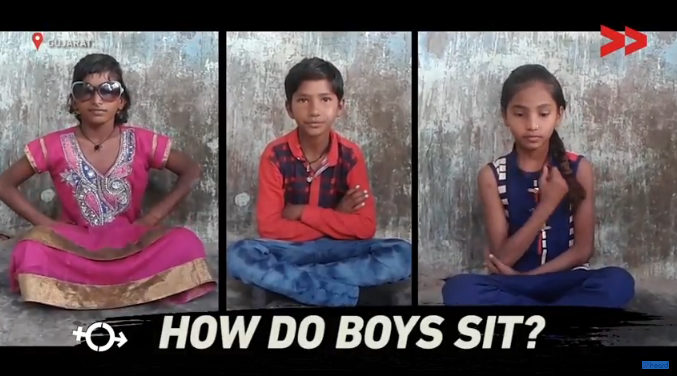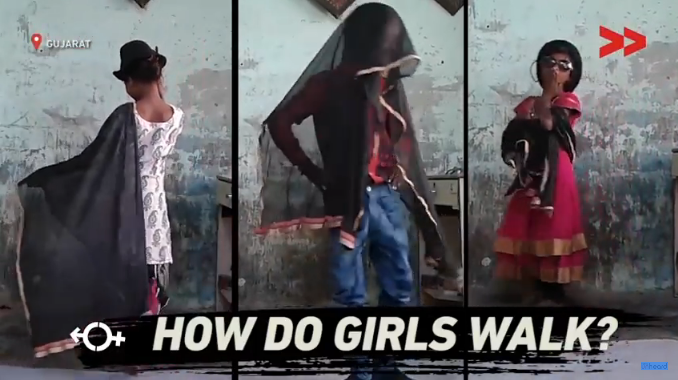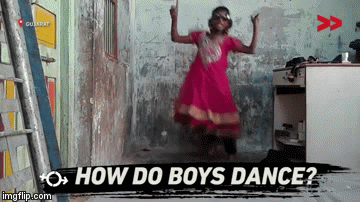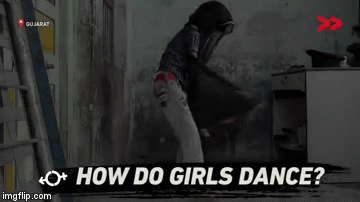Pink versus blue, pretty versus brave: the childhood landscape is mined with pernicious gender stereotypes that dictate how we behave as adults.
Boys don’t cry. Sit like a lady. Barbie for girls and lego for boys. These are seemingly innocuous adages almost everyone has grown up with. But is it really that innocent, well-meaning? It is not just that girls are supposed to wear pink, they should also play with toy vacuum cleaners and learn to relate to fluffy, cuddly animals. Boys on the other hand are supposed to wear blue and have rugged adventures.
[embed]https://www.instagram.com/p/BVFd2F7jGuy[/embed]
[embed]https://www.instagram.com/p/BVfZKljBKBc[/embed]
Most of us never learn to question these inflexible binaries and end up replicating them in every aspect of our lives. When a little girl is being given a toy vacuum cleaner and a little boy is being given a NASA tee shirt, we are telling them what we expect of them. We expect the girl to become a homemaker and the boy to aspire to becoming an astronaut. This is not simply a difference in roles--it is a hierarchised difference. There is no doubt in our mind that an astronaut is a harder thing to become compared to someone who can vacuum a house.
Community Correspondent Daxaben from Gujarat set out to explore how children relate to gender stereotypes imbibed from their families and surroundings. She asked them to perform how girls and boys act in various situations: how do boys cry, laugh, sit, stand, walk and dance? And how do girls do the same? Their responses are not as uniform as one might expect. The children act out the various roles without any affectations, laughter in their eyes--they’re clearly having a lot of fun. Sometimes gender difference is only limited to the sartorial: boys don the dupatta to indicate they are now acting in a feminine role. Girls wear sunglasses and a hat when they are enacting masculine roles. However, a clear difference emerges between the two genders when they are asked to show the difference in sitting, standing, walking and dancing, whereas they cry and laugh in a somewhat similar fashion. Both boys and girls think that when girls sit, they do so in postures that are markedly ‘feminine’: a hand on the cheek, primly folded legs. When boys sit, there’s casual masculine insouciance radiating from them: hands crossed over the chest authoritatively, or legs spread comfortably apart.
[caption id="attachment_15256" align="aligncenter" width="677"] Asked to imitate how boys sit, both girls and boys struck authoritative postures.[/caption]
Asked to imitate how boys sit, both girls and boys struck authoritative postures.[/caption]
Girls are supposed to sashay like they are on the ramp when they walk. Boys have a definite swagger, upturned collars and often wear goggles!
[caption id="attachment_15257" align="aligncenter" width="678"] Stereotypes dictate that girls are supposed to sashay like they are on the ramp when they walk.[/caption]
Stereotypes dictate that girls are supposed to sashay like they are on the ramp when they walk.[/caption]
The most marked difference is in how boys and girls are perceived to dance. Girls are demure, mostly using a dupatta, and their dance moves are limited to hand movements and swaying hips. Boys on the other hand, the girls think, only perform the Punjabi bhangra--uninhibited and an exhibition of joyous exuberance. Boys themselves think that their dance moves must show how physically able they are--they turn cartwheels and do complicated breakdance moves.
[caption id="attachment_15258" align="aligncenter" width="360"] According to this little girl, this is how boys dance![/caption] [caption id="attachment_15259" align="aligncenter" width="360"]
According to this little girl, this is how boys dance![/caption] [caption id="attachment_15259" align="aligncenter" width="360"] They shake their booty according to this boy.[/caption]
They shake their booty according to this boy.[/caption]
While it is entertaining to watch them perform with so much enthusiasm, the video highlights the embedded hierarchy that is inherent in patriarchal gender roles. The girls dance without inhibition when they are imitating boys. So it’s not like they are incapable of, less skilled than, or enjoy it any less. But something imposes a restriction on them--their patriarchal milieu.
Some might be tempted to argue that things are a lot better for girls in urban environment. But is it really so? Radhika, who works at the Video Volunteers Goa office, recalls that she had to establish her femininity as a child. “I had short hair. So all the neighbourhood kids would keep referring to me as a boy. I countered them by pointing out my painted nails: how could I be a boy if I was wearing nailpolish?!” she says. But not every instance is so innocuous: boys are berated for crying or acting ‘like a girl’ which can lead to serious mental health issues. Within the proscribed patriarchal roles, boys should never express their emotions or vulnerability--surely, a horrible thing to condemn a young child to. Similarly, girls are rewarded for being ‘cute’, ‘pretty’. Girls are not ‘brave’, they are ‘princesses’. Studies reveal that parents are four times more likely to caution their daughters against childhood mishaps that are not life-threatening but entail a visit to the emergency room, than they are their sons. When children are not forced to conform to fixed gender stereotypes they are happier and learn to view the world outside the constrictions of the pink and blue lens.
[embed]https://www.instagram.com/p/BVyqWiYj_36/[/embed]
When a boy plays with a kitchen set, he might just learn to help with household tasks rather than requiring a laundry detergent advert that preaches to men to ‘share the load’ by occasionally operating the washing machine!
More and more young women across the world are writing, painting and creating memes to challenge and subvert the expectations of traditional gender roles. They are doing this with humour and empathy. But even this doesn’t prevent them from being abused and threatened by online trolls who are resorting to ever more vicious attack to hold onto their precarious male privilege. The onus is on us to talk and write about challenging gender roles so that someday a little boy wearing a skirt and a little girl who plays with toy soldiers are no longer seen as aberrations.
[embed]https://www.instagram.com/p/BVeSHo9hZUm/[/embed]
Article by Madhura Chakraborty
Fixing India| Catching A Human Trafficker| Featuring Navita Devi|
Because of Navita's determination and bravery, a human trafficking agent is being the bars, and the girls have returned to their homes.This is how our CC’s are helping raise issues and finding solutions.
Self-Help groups unable to reach their potential
In Udaipur village of Harhua block of Varanasi district, the Mahalaxmi Self Help Group was formed 3 years ago, but they could not operate independently, because of the high handedness of the village head and the laxity of the Government officials.

